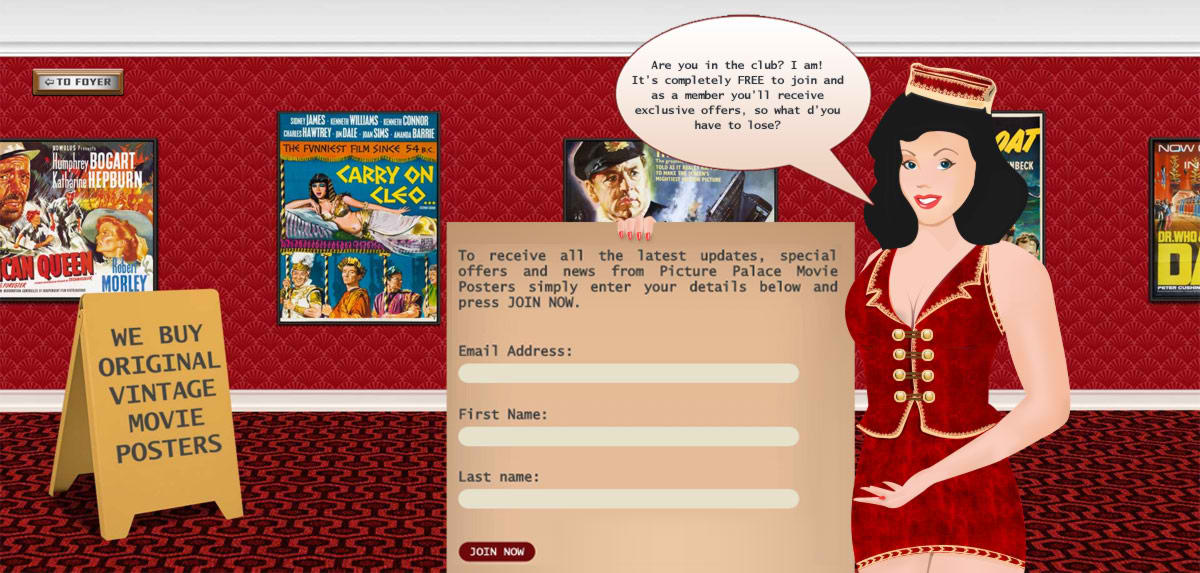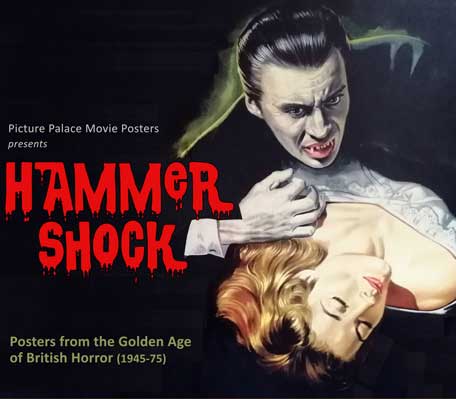POSTER SIZES
These are some of the most common sizes (height x width), however it’s important to remember that sizes can still vary from poster to poster.
Great Britain
GB Front of House Cards (8" x 10")
GB Lobby Cards (11" x 14")
GB Crown (15" x 20")
GB Liftbill (22.5" x 16")
GB Half Sheet (22" x 28")
GB Double Crown (30" x 20")
GB Quad Crown (30" x 40")
GB One Sheet (40" x 27")
GB Three Sheet (81" x 40")
GB Door Panel (60" x 20"-22")
GB Four Sheet (60" x 40")
GB Twelve Sheet (81” x 81”)
GB Sixteen Sheet (120" x 80")
GB Forty-Eight Sheet (120" x 240")
USA
US Lobby Cards (11" x 14")
US Window Card (22" x 14")
US Half Sheet (22" x 28")
US Insert (36" x 14")
US One Sheet (41" x 27")
US Three Sheet (81" x 41")
US Subway (41" x 54")
US 40 x 60 (60" x 40")
US Six Sheet (81" x 81") (though this can vary by a couple of inches)
Australia
OZ Daybill (30" x 13")
OZ One Sheet (40" x 27")
OZ Three Sheet (80" x 41")
France
French Petite (22" x 15")
French Affiche (30" x 22")
French Affiche (43" x 24")
French Grande (63" x 47")
Italy
Italian Photobusta (14" x 20")
Italian Photobusta (18" x 26")
Italian Locandina (13" x 27")
Italian One Sheet (28" x 39")
Italian Two Foglio (55" x 39")
Italian Four Foglio (55" x 78")
Germany
German A1 (23" x 33")
German A0 (46" x 33")
Japan
Japanese B0 (40" x 58")
Japanese B1 (40" X 29")
Japanese B2 (20" x 29")
Others
Argentinian One Sheet (29" x 43")
Belgian Affiche (14" x 19-22")
Danish One Sheet (24" x 33")
Mexican One Sheet (26" x 39")
Spanish One Sheet (27" x 39")
Swedish One Sheet (23" x 33")
Swedish One Sheet (27" x 40")
CONDITION GRADING
Remember, all our posters are genuine vintage originals, many being well over 50 years old, so will show to a lesser or greater degree their history and character… but then, that’s part of the whole appeal of owning a genuine original piece of movie history!
***** BEES KNEES! Pretty much as issued!
**** EXCELLENT: minimal wear and possible light handling
*** V GOOD: light wear with possible pin holes and edge nicks
** GOOD: intact, but with possible tears, pin holes and stronger handling
* FAIR: heavy wear, tears and possible paper loss. (Generally we wouldn’t offer a poster in this condition unless it was exceptionally rare.)
GUIDE TO CONSERVATION FRAMING
Having invested in your precious poster(s) it is very important indeed to make sure you use a framer who is experienced in handling delicate and valuable artworks. Not all framers are the same! Many general high street framers simply don’t understand the specific requirements for conserving your poster safely for years to come. I’ve seen a lot of damage done by inexperienced framers over the years. Damage which can be very expensive to put right (if it’s possible to fix at all) and should never have happened. So here are a few questions you should ask your framer before going ahead:
1.
Do you use conservation materials throughout?
If they don’t know or the answer is ‘no’, don’t use them!
2.
How do you fix my poster?
In an ideal world nothing should be attached to the poster, but if it is being hinged make sure they use only archival, reversible tabs. If they suggest dry mounting run a mile! This is a process where the poster gets stuck down onto board and, unlike linen backing, is pretty much irreversible. This will completely destroy any value your poster may have!
3.
What glass do you recommend?
Posters should always be framed with a minimum of 99% UV protection glass or the equivalent Perspex, depending on size and weight. More valuable posters can be framed with museum glass, which offers full protection and ultimate clarity… but be warned, this does cost, but if the value of the poster warrants it, they look amazing.
4.
Will my poster be against the glass?
From a conservation perspective, it’s very important your poster isn't squashed against glass. This can seriously damage the poster over time, potentially causing condensation staining, sticking and patching, surface damage or actual paper loss (especially if the glass gets broken!). There are various ways a poster can be kept off the glass and a true conservation framer will be able to advise the best solution.
5.
What goes on the back?
Importantly there should always be an acid free conservation barrier board directly behind the poster. Most conservation framers will also use a wax coated outer backboard to repel any dampness. Standard MDF will absorb water and in the worst case scenario, transfer the dampness into the frame, causing your poster to cockle (cockling is where the paper distorts and becomes wavy) or even worse, propagate the growth of mold!! Once this has happened it is very difficult to get the poster to ever lay flat again as the paper is actually fundamentally damaged. So avoid! When it comes to handling valuable paper, prevention is most definitely better than cure.
WE BUY MOVIE POSTERS!
Asking yourself "where can I sell my original vintage movie posters"? Well, right here! We’re always interested in buying or consigning good quality posters, especially from 1940-1970. So if you, or someone you know, has a specific poster or a whole collection for sale, please don’t hesitate to get in touch for FREE advice by calling Mark on
07790 802146 or emailing details with images to
info@picturepalacemovieposters.co.uk

